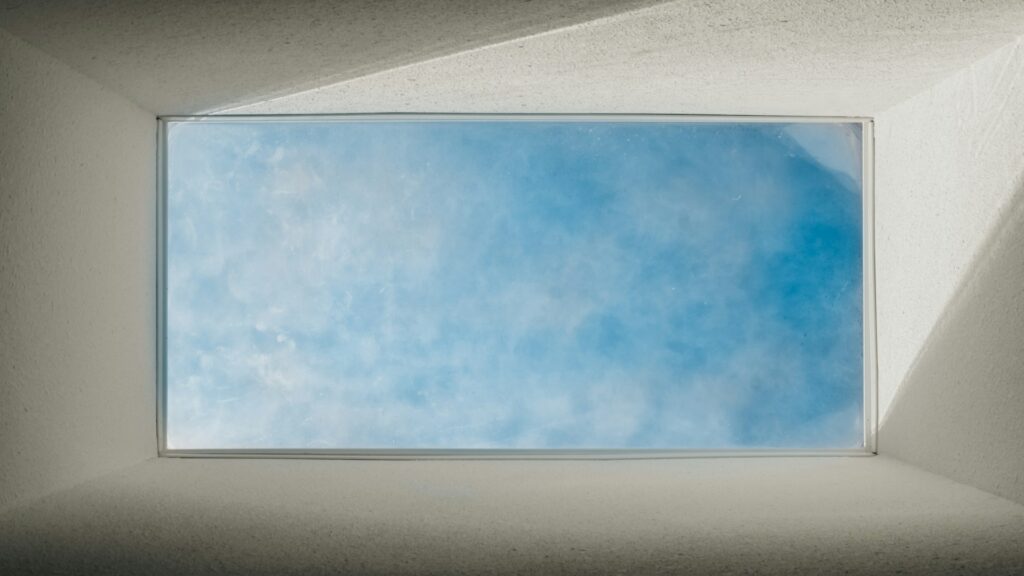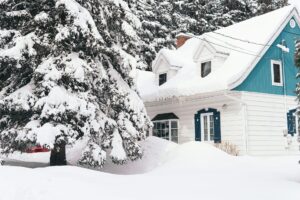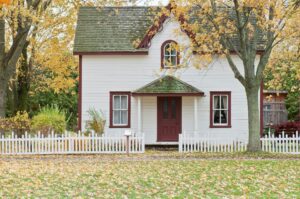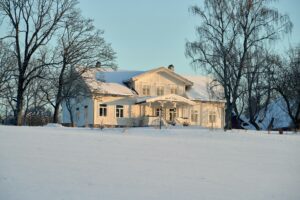The rainy season in the Pacific Northwest transforms ordinary days into a steady chorus of raindrops overhead. For homeowners in East Portland, these months can also bring worry when it comes to skylights. These magnificent sources of natural light can unfortunately become susceptible to leaks and moisture damage if not properly cared for. That’s why a thoughtful approach to skylight maintenance, especially before the heavy rains set in, can provide lasting peace of mind.
Portland’s wet and often chilly fall season places special demands on skylights. From flashing that’s weakened through normal wear and tear to an accumulation of moss and debris, there are plenty of possible trouble spots that might crop up at the worst time of year. With a bit of proactive attention, however, you can ensure your skylights stand up to the weather while continuing to brighten your home with the soft glow of autumnal daylight.
Why Fall Matters for Skylight Care
Fall is a season of transition. Leaves change color and drop, temperatures begin to dip, and the skies hold a near-constant threat of rain. This pivotal moment between summer’s dryness and winter’s intensity offers an ideal window to address issues hidden during drier months.
• Hidden Imperfections Revealed. Minor cracks or worn seals might go unnoticed during summer. However, once heavier moisture arrives, these dormant vulnerabilities can transform into noticeable leaks.
• Preventing Leaks Under Pressure. Rainy conditions put extra pressure on skylights and their seals. By scheduling a focused skylight maintenance Oregon homeowners trust, you’re proactively preventing moisture from seeping in.
• Ideal Repair Weather. Even if repairs are needed, performing them in fall is often easier than winter. Temperatures are still moderate, helping sealants cure more effectively, and you can address repairs without fighting the more extreme winter storms.
Common Leak Points and How to Prevent Them
Leaks can happen at any juncture in skylight installation, especially if materials and maintenance are overlooked. Recognizing the most common weak spots ahead of time means you can address them before any interior damage occurs.
- Degraded Flashing
• Flashing is the metal (or other material) that bridges the gap between the skylight and the roof. Over time, it can rust, bend, or detach.
• Regularly inspecting flashing for gaps or splits is essential. If issues are found, professionals can reseal your skylight or recommend new flashing materials. - Compromised Seal Integrity
• The seal around the skylight is designed to keep moisture out. When it deteriorates, due to extreme weather shifts or simple aging, a steady leak can develop.
• Incorporate routine seal checks into your annual checklist. Fall is perfect for re-caulking or installing updated sealing strips, ensuring a watertight fit once winter sets in. - Cracked Lenses or Glass
• Hail, falling branches, or accidental impact from debris can create small cracks in the skylight itself. These cracks expand over time and can lead to leaks.
• At the first sign of lens damage, schedule a skylight leak repair right away. Addressing issues with the lens or glass before extensive moisture penetrates helps you avoid more costly problems later.
Inspecting and Maintaining Flashing
For many East Portland residents, flashing serves as the first line of defense against water intrusion. Without a secure, properly installed flashing system, even a brand-new skylight risks pooling moisture and subsequent leaks.
• Professional Visual Check. A roofing professional inspects for rust, warping, or unsealed edges. Catching these early can help you avoid extensive repair work.
• Periodic Cleaning. Moss growth and fallen leaves can trap moisture against the flashing. Cleaning gutters and roof surfaces around the skylight helps reduce rust and corrosion.
• Timely Repairs. A minor gap that’s easily patched or sealed in early fall can turn into a major source of leaks during a single downpour in late winter.
For more tips on ensuring your roof stays in top shape, see our roof maintenance guides. Keeping the entire roof area around your skylights free from debris will support longevity and reduce leak risk.
Maximizing Seal Integrity
The best skylight is only as good as its seal. Portland areas experience wide temperature fluctuations and high humidity, which test the resilience of skylight seals.
• Choosing the Right Caulk or Sealant. Not all sealants are equally suited to rainy, windy Pacific Northwest conditions. A formulation that remains flexible in colder temps will better accommodate natural expansion and contraction.
• Checking Seals From Interior and Exterior. Sometimes the warning signs of a failing seal appear indoors. Keep an eye out for condensation buildup on skylight edges or even faint brownish water stains around the frame.
• Scheduling Annual Assessments. A quick once-a-year lookover, and a more thorough professional inspection every few years, can be enough to maintain top-notch seal integrity, preventing emergency calls during winter storms.
Condensation Management in Humid Fall Weather
Condensation is a common challenge when cool outside air meets warmer interior conditions. While condensation typically isn’t as concerning as an actual leak, it can still lead to moisture-related problems, including mold or mildew growth.
• Improve Ventilation. Ensuring your home has sufficient airflow helps reduce trapped humidity. Bathroom fans, kitchen exhaust systems, and even opening windows during drier moments all contribute to balanced moisture levels.
• Ventilating Skylights. If you have vented skylights, occasionally opening them during mild days allows fresh air to circulate. This reduces interior condensation significantly.
• Dehumidifiers. In very damp climates or spaces, a portable or whole-home dehumidifier can prevent excess moisture on skylights and windows.
For more on how keeping indoor humidity under control boosts overall comfort, you might explore our natural light articles, which also highlight the importance of balanced indoor air quality.
Considering a Skylight Upgrade
If your skylight has endured years of wear, or if you’re simply looking to optimize your home, an upgrade may be the best long-term solution. Modern skylight designs incorporate energy-efficient glass, improved seals, and advanced water-management technologies that help prevent leaks.
• Energy Efficiency. A newer skylight can keep heat in during chilly fall nights and block excess solar heat on sunny days. Look for Low-E (low emissivity) coatings to reflect heat without sacrificing light.
• Self-Cleaning Coatings. Many newer models have built-in coatings designed to shed water and dirt more efficiently, making it easier to keep your skylight clean.
• Enhanced Seal Technology. Contemporary skylights frequently offer better flashing systems and a more robust seal around fasteners and edges, particularly important for rain-heavy regions like East Portland.
When planning a Portland skylight installation, it’s wise to compare different models to pick the right fit for your home’s aesthetics and performance needs.
Fall as the Optimal Time for Skylight Repairs
Timing is everything when it comes to skylight maintenance and repairs. Attempting a thorough fix in the bleakness of winter can be more challenging, and summer slides by quickly. Fall’s moderate temperatures offer just the right environment to reinforce or renew your skylight’s protective features.
• Pleasant Working Conditions. Skylight repairs might involve climbing onto the roof, sealing edges, or replacing parts. The crisp but generally milder autumn weather is less harsh for workers and materials.
• Cure Time for Sealants. Caulks and sealants typically require a certain temperature range for the best adhesion. Fall’s mild climate ensures they cure without the extreme heat of summer or the freezing temperatures of winter.
• Peace of Mind for Winter. By handling your skylight leak repair now, you’ll rest easy once the heavy Pacific Northwest rains and colder winds begin to sweep in.
Skylight Types and Wet-Climate Performance
Comparison can help in deciding which skylight is best suited for long-term leak prevention. Below is a brief look at common types:
| Skylight Type | Mounting Style | Pros in Wet Climates | Potential Drawbacks |
|---|---|---|---|
| Fixed Skylight | Deck or Curb | • Fewer moving parts • Lower chance of accidental leaks | • Less ventilation |
| Vented Skylight | Deck or Curb | • Allows airflow • Reduces humidity and condensation | • Requires additional sealing |
| Curb-Mounted Skylight | Raised Curb | • Extra height for water deflection • Good for low-slope roofs | • Needs proper flashing around curb |
| Deck-Mounted Skylight | Direct to Roof | • Seamless look • Reduces exterior buildup of debris | • Installation must be precise |
Each option can work well in Oregon’s climate with professional installation and maintenance, but homeowners should consider factors like roof slope, budget, and long-term leak prevention goals.
FAQ: Skylight Leak Prevention and More
Below are a few common questions East Portland residents frequently ask when planning skylight maintenance and repairs.
- How can I tell if my skylight is leaking or just experiencing condensation?
• A leak typically results in localized water spotting, dripping, or stains on ceilings and walls. Condensation often appears as fogging on the inside of skylight glass, particularly around the edges. If you’re unsure, a professional inspection can confirm the source. - When should I repair versus replace my skylight?
• If the skylight frame or glass is structurally sound, minor lighting or flashing issues can be fixed with small repairs. However, if you notice cracks in the lens, frequent leaks, or an older skylight inefficiently retaining heat, replacing with a modern model might save money over time. - What is the best way to minimize condensation? • Increase ventilation and control indoor humidity. This can be done by installing vented skylights, using exhaust fans in kitchens and bathrooms, and running dehumidifiers if necessary. More information is available from the EPA’s guide on moisture and mold.
- Can skylight work be done during rainy weather? • Small fixes like flashing touch-ups might be manageable between rain showers. However, more extensive skylight maintenance is often best done in dry conditions. Fall’s typically less frequent rains compared to winter provide a workable window.
Balancing Natural Light in Gray Oregon Months
Even on the cloudiest fall and winter days, skylights infuse a special glow that enhances rooms and reduces reliance on artificial lighting. They help combat the seasonal grayness by inviting in whatever daylight is available. Along with the potential energy savings from reduced electric lighting, the psychological boost of a brighter interior can make the rainy months feel less dreary.
• Mood Improvement. Natural light is known to positively influence mood and energy levels. This is especially important in regions like East Portland where daylight can be limited.
• Visual Space Enhancement. Properly placed skylights can make your living areas feel more expansive and open, even as the skies outside deepen with clouds.
• Year-Round Utility. A well-chosen skylight design will provide beneficial light for all seasons, integrating comfortably with your home’s style and roof structure.
Taking Action This Fall
A little proactive planning now can ward off unexpected headaches later. Whether it’s directly inspecting your skylight, scheduling a skylight leak repair for peace of mind, or exploring an upgrade with modern sealing technology, fall remains an excellent time for action. Even the smallest tasks, like clearing leaves or verifying the seal condition, can have a big impact on how your skylight performs.
• Conduct Your Own Visual Inspection. From inside, look for any unusual condensation patterns, discoloration, or evidence of water infiltration. Outside, ensure the skylight is free from any noticeable damage or debris.
• Consult a Professional. For a thorough checkup, local experts like HOMEMASTERS can assess the flashing, seals, and overall structural integrity of your skylight. Their experience helps prevent minor issues from spiraling into significant problems.
• Upgrade Intentionally. If you’re ready for a replacement, Portland skylight installation specialists can guide you on new models with superior wet-climate performance and improved energy efficiency.
Building a Future of Leak-Free Light
There’s a certain magic in bringing daylight indoors, especially during a season when the skies are often gray. Skylights not only provide warmth and natural glow but also connect you to the wider world, rainy days become mesmerizing rather than simply dreary. However, best results come when skylights are properly maintained and ready to repel the challenges of the Pacific Northwest climate.
Each year teaches homeowners that foresight saves stress and money. As the leaves begin to accumulate on your roof and the autumn rains start to settle in, consider making your skylight part of your annual fall routine. A short inspection, small repairs, or a new skylight installation can help ensure pleasant, leak-free brightness for years to come.
With thoughtful care and timely attention to details like flashing, seals, and ventilation, you’ll enjoy the benefits of natural light well beyond this season. If you’re seeking even more guidance, explore our previous skylight content for additional tips on product choices, installation techniques, and creative ways to maximize illumination. By nurturing a skylight that stands firm against both impending rain and the test of time, you can truly embrace the soft, comforting light that makes an Oregon home feel bright, in every sense of the word.




